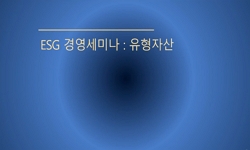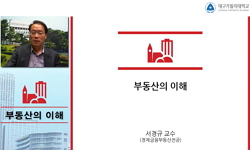본 논문은 1990년대 텔레비전 드라마의 아파트 재현을 통해 주거 환경의 변화와 당대 사회의 욕망을 두루 살펴보고자 한다. 1990년대 이후 부동산 불패의 신화는 한국인들이 ‘내 집 마련’을 ...
http://chineseinput.net/에서 pinyin(병음)방식으로 중국어를 변환할 수 있습니다.
변환된 중국어를 복사하여 사용하시면 됩니다.
- 中文 을 입력하시려면 zhongwen을 입력하시고 space를누르시면됩니다.
- 北京 을 입력하시려면 beijing을 입력하시고 space를 누르시면 됩니다.

부동산의 경관과 아파트라는 취향 = The Landscape of Real Estate and the Cultural Preference for Apartment Living
한글로보기https://www.riss.kr/link?id=A109785396
-
저자
송치혁 (세종대학교)
- 발행기관
- 학술지명
- 권호사항
-
발행연도
2025
-
작성언어
Korean
-
주제어
Real estate ; Landscape ; Apartment ; Large apartment complex ; The 1990s ; Television drama ; Asset ; Middle Class ; 부동산 ; 경관 ; 아파트 ; 대단지 ; 1990년대 ; 텔레비전 드라마 ; 자산 ; 중산층
-
등재정보
KCI등재
-
자료형태
학술저널
-
수록면
51-78(28쪽)
- 제공처
-
0
상세조회 -
0
다운로드
부가정보
국문 초록 (Abstract)
본고는 이 점에 주목하여 1990년대를 전후한 한국 텔레비전 드라마가 부동산과 대단지 아파트를 재현하는 ‘경관’에 집중했다. 위계화된 대단지 아파트는 부동산과 재개발을 둘러싼 동시대의 인식 변화를 보여주는 것이었다. 시청자들은 입주민들과 동일한 눈높이에서 대단지 아파트 안에서의 라이프스타일을 공유한다는 착시를 경험하며 중산층에 대한 욕망을 내면화할 수 있었다.
한편 단지라는 경계는 기성세대와 신세대가 혼재되는 한국 사회의 변화를 함축적으로 제시한다. 주거 공간의 재편성을 통해 의도적으로 구획된 대단지 아파트는 한국 사회의 관습변화를 실험하는 공간으로 공동체와 주거에 대한 인식 변화를 현대적 라이프스타일을 재구성해냈다. 이러한 과정을 통해 아파트는 공적 통제의 핵심으로 기능할 수 있었으며 시청자들이 질서와 통제를 내면화하는 유용한 경로를 제공해왔다.
아파트의 대중적 보급은 유년기부터 자기만의 방을 소유한 경험은 이후 청년들의 개별화된 기억과 문화적 취향으로 연결된다는 점에서 또 다른 주목을 요한다. 2000년대 이후 청년세대가 원룸과 1인 가구로 대표되는 집과 가족에 대한 파편적 감각을 키워가며 새로운 문화적 맥락을 형성한다는 점에서 아파트를 둘러싼 논의는 공시적・통시적 고찰을 요하고 있다.
본 논문은 1990년대 텔레비전 드라마의 아파트 재현을 통해 주거 환경의 변화와 당대 사회의 욕망을 두루 살펴보고자 한다. 1990년대 이후 부동산 불패의 신화는 한국인들이 ‘내 집 마련’을 인생의 목표로 삼는 데 기여했으며 이에 따라 한국인의 생애주기를 설정하는 데 결정적인 역할을 해왔다. 또한 아파트는 부동산을 향한 한국의 사회적 욕망이 응축된 ‘상품’으로 주거뿐만 아니라 한국 사회 전반에 광범위한 영향을 끼치면서 현대적 삶의 양태를 형성해왔다.
본고는 이 점에 주목하여 1990년대를 전후한 한국 텔레비전 드라마가 부동산과 대단지 아파트를 재현하는 ‘경관’에 집중했다. 위계화된 대단지 아파트는 부동산과 재개발을 둘러싼 동시대의 인식 변화를 보여주는 것이었다. 시청자들은 입주민들과 동일한 눈높이에서 대단지 아파트 안에서의 라이프스타일을 공유한다는 착시를 경험하며 중산층에 대한 욕망을 내면화할 수 있었다.
한편 단지라는 경계는 기성세대와 신세대가 혼재되는 한국 사회의 변화를 함축적으로 제시한다. 주거 공간의 재편성을 통해 의도적으로 구획된 대단지 아파트는 한국 사회의 관습변화를 실험하는 공간으로 공동체와 주거에 대한 인식 변화를 현대적 라이프스타일을 재구성해냈다. 이러한 과정을 통해 아파트는 공적 통제의 핵심으로 기능할 수 있었으며 시청자들이 질서와 통제를 내면화하는 유용한 경로를 제공해왔다.
아파트의 대중적 보급은 유년기부터 자기만의 방을 소유한 경험은 이후 청년들의 개별화된 기억과 문화적 취향으로 연결된다는 점에서 또 다른 주목을 요한다. 2000년대 이후 청년세대가 원룸과 1인 가구로 대표되는 집과 가족에 대한 파편적 감각을 키워가며 새로운 문화적 맥락을 형성한다는 점에서 아파트를 둘러싼 논의는 공시적・통시적 고찰을 요하고 있다.
다국어 초록 (Multilingual Abstract)
Focusing on this aspect, this study explores how Korean television dramas of the 1990s represented large-scale apartment complexes as ‘landscapes’ reflecting the social desire for real estate. Hierarchically structured apartment complexes visualized shifting perceptions regarding real estate and urban redevelopment during this period. Viewers experienced a sense of illusionary identification with the residents of these complexes, enabling them to internalize middle-class aspirations.
Furthermore, the boundary of the apartment complex metaphorically captured generational transitions within Korean society, where older and younger generations coexisted. Through the spatial reorganization of residential areas, these large-scale apartment complexes became experimental sites for reconfiguring the norms of Korean society. They served as arenas for transforming perceptions of community and home life, thereby reshaping modern lifestyles. Through this process, apartments came to function as critical sites of public control, offering viewers a means to internalize social order and discipline.
The widespread adoption of apartment housing warrants further attention, particularly in light of the fact that the experience of having one's own room from childhood has been closely linked to the individualized memories and cultural tastes of younger generations. Since the 2000s, as the younger generation has cultivated a fragmented sense of home and family—symbolized by studio apartments and single-person households—the discourse surrounding apartments demands both synchronic and diachronic analysis to fully grasp its cultural implications.
This paper aims to examine the transformation of residential environments and the desires of Korean society in the 1990s through the representation of apartment complexes in television dramas. Since the 1990s, the so-called “myth of invincible real ...
This paper aims to examine the transformation of residential environments and the desires of Korean society in the 1990s through the representation of apartment complexes in television dramas. Since the 1990s, the so-called “myth of invincible real estate” has played a pivotal role in shaping the life goals of Koreans, establishing homeownership as a primary objective in life. Consequently, the acquisition of an apartment has become integral to defining the life cycle of the Korean people. Apartments, as commodities that encapsulate the Korean society’s collective desire for real estate, have exerted far-reaching influence not only on residential life but also on the overall structure of modern Korean society, contributing to the formation of contemporary lifestyles.* This work was supported by the Ministry of Education of the Republic of Korea and the National Research Foundation of Korea.(NRF-2022S1A5B5A17049595)
Focusing on this aspect, this study explores how Korean television dramas of the 1990s represented large-scale apartment complexes as ‘landscapes’ reflecting the social desire for real estate. Hierarchically structured apartment complexes visualized shifting perceptions regarding real estate and urban redevelopment during this period. Viewers experienced a sense of illusionary identification with the residents of these complexes, enabling them to internalize middle-class aspirations.
Furthermore, the boundary of the apartment complex metaphorically captured generational transitions within Korean society, where older and younger generations coexisted. Through the spatial reorganization of residential areas, these large-scale apartment complexes became experimental sites for reconfiguring the norms of Korean society. They served as arenas for transforming perceptions of community and home life, thereby reshaping modern lifestyles. Through this process, apartments came to function as critical sites of public control, offering viewers a means to internalize social order and discipline.
The widespread adoption of apartment housing warrants further attention, particularly in light of the fact that the experience of having one's own room from childhood has been closely linked to the individualized memories and cultural tastes of younger generations. Since the 2000s, as the younger generation has cultivated a fragmented sense of home and family—symbolized by studio apartments and single-person households—the discourse surrounding apartments demands both synchronic and diachronic analysis to fully grasp its cultural implications.
동일학술지(권/호) 다른 논문
-
- 대중서사학회
- 강지희
- 2025
- KCI등재
-
1990년대 여성지의 내 집 마련 담론과 여성금융주체의 형성 - 『우먼센스』를 중심으로
- 대중서사학회
- 최시현
- 2025
- KCI등재
-
애니메이션에서의 패러디와 복선에 관한 연구 - <기동전사 건담 수성의 마녀 시즌1>을 중심으로
- 대중서사학회
- 김종진
- 2025
- KCI등재
-
- 대중서사학회
- 문은혜
- 2025
- KCI등재




 KCI
KCI






